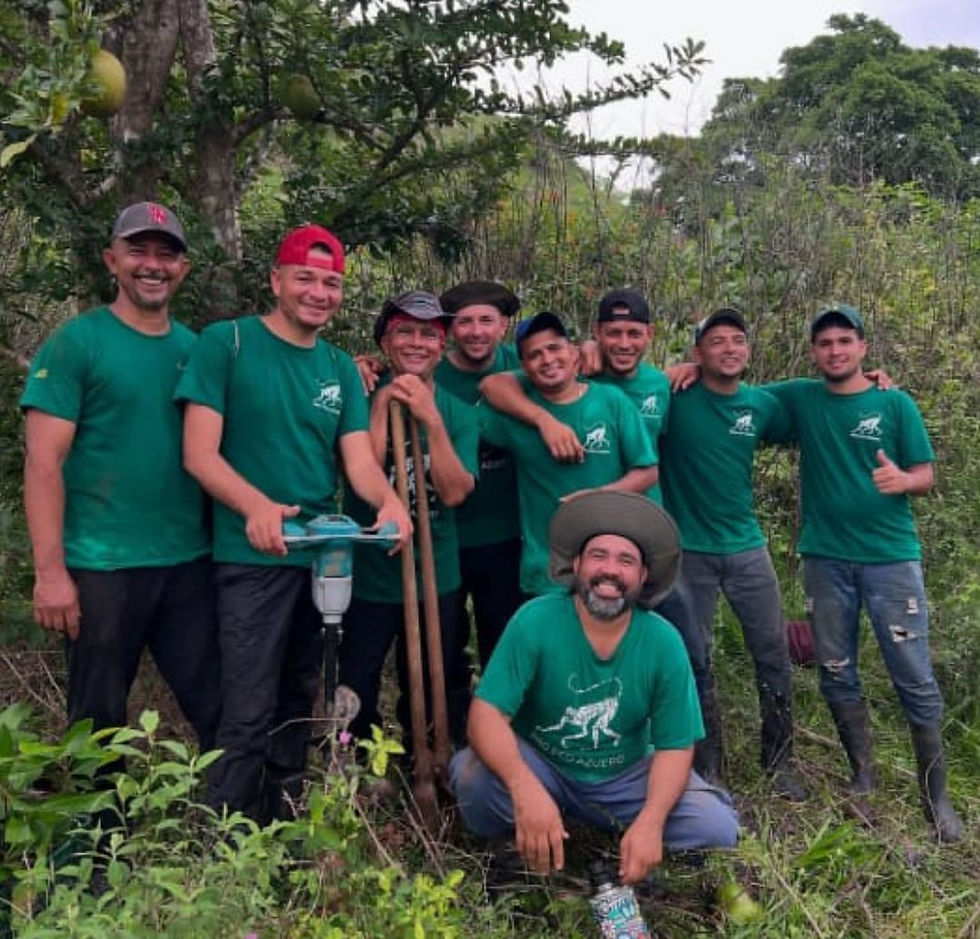Youth Perspective: 1.5 degrees from a post-apocalyptic landscape
- Apr 27, 2017
- 4 min read
1.5 degrees from a post-apocalyptic landscape
Vicente Vazquez, a former Azuero Earth Project Intern, shares his thoughts about the future of Azuero.
We tend to evaluate all that we can using numbers, quantifying what we need and this gives us pleasure; we count the amount of forests, water, and animals in order to show statistics of how our habitat is being destroyed and to create awareness of the harm that will keep continuing with our actual lifestyles. 1.5 didn’t look like a very exorbitant number and thus, it lacks importance for many; it seems paranoid to think that our lifestyle could be affected by a numerically small increase in the temperature, but nature doesn’t know numbers, it only knows thresholds where the equilibrium is maintained, and others, where the system collapses. The ecosystems found ways to mitigate the imbalance induced by human activity, but a long time ago we passed this capacity and from that moment on, the temperature began to increase gradually. We can handle the consequences through adaptation, but this would just be to postpone the inevitable.
Panama is a country with relatively low CO2 emissions. For a moment, we can feel free of blame, we can blame other nations for the effects of climate change, but we are omitting the fact that the entire economy is based on carbon. Every product, food, and service that we acquire generates CO2 emissions, and it does not stop there; they continue on to solid waste that accumulates day after day.
I live in Herrera province in Panama; we are part of the dry arc, an area that is affected every year by the El Niño phenomenon. Many senior citizens comment how in their youth, this region was a cooler place; actually the estimates for the region say that by 2050, precipitation will decrease from 23% to 1.5% and the temperature would be increasing by 2 degrees or more. Every summer we see that our streams are completely dry and our main river has lowered in height such that the concentration of dirt and waste again becomes more evident. It has been years since the rain came in quantities sufficient to alleviate heat and the evaporation of rivers. Furthermore, our forests have been replaced by farmland and extensive cattle raising. It is this scenario that I pose to my country, if the mean temperature rises by 1.5 degrees, not only will we encounter lower rainfall and higher temperatures, we will also find their causes in trying to adapt to the adverse conditions.
The effects of the scarce rainfall would start to affect our diet based on grains, like corn and rice. The harvests will be less and less profitable over time and in order to continue supplying the population’s demand that keeps dizzily increasing, we will have to employ GMOs in order to deal with the heat and the absence of water. We will have to increase the hectares of land we use to cultivate crops and raise animals, which is the other component of our diet; the meat of cows, pigs, and poultry, animals that will be affected by the droughts and the heat; the production of meat with an extensive model like the one being used now will be much more costly, but one will need to invest many scarce resources like water and hectares of pasture in order to keep obtaining meat. All of this will only make the price of food increase, and we will have to import more, and the forests will have to be destroyed, leaving us without any defense to deal with the increase of 1.5 degrees. Without trees that protect the watersheds, the water will simply become vapor.
Biodiversity will suffer a hard hit, the wild animals, unlike us, don’t have the capacity to adapt to the change of temperature in a short time, their population will be drastically reduced by the shortages of water, habitats, and food. Previously, we have already brought various species in the Azuero region to the verge of extinction, the indiscriminate hunting and the destruction of their habitats have been sufficient, the question is: How much more can the wild animals of Panama endure?
The lack of water in the rivers will reduce the hydroelectric energy production, thus the prices of energy will increasingly fluctuate; furthermore, one must consider the negative effects that the Panama Canal will suffer. Depending on the level of the reservoirs, which can supply the demand of the maritime trade and be the spearhead of a country dedicated to services, their poor functioning will bring a recession that will impede a healthy public investment and will make difficult the possibility of adapting to the temperature increase. The economy will become unstable because we will have to increase our national debt in order for us to successfully adapt and survive.
With a country without water, with food shortages, deforested forests, low biodiversity, and an unstable economy, social problems will become inevitable. Our primitive drive for survival will emerge, and without cooperation, the system will simply collapse.









Comments